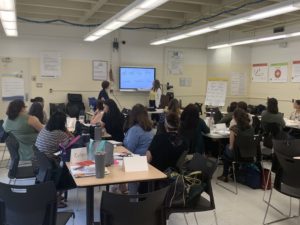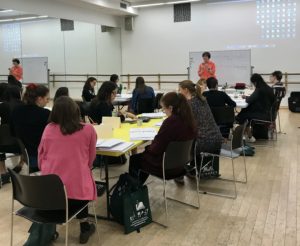Diagnosing dyslexia is the first step in helping individuals overcome it. Look for these warning signs.
Dyslexia is a language-based learning disability . It’s possible that up to 20% of the population has dyslexia. This means that one in every five people deals with dyslexia. And because it can range in severity, it’s often difficult to diagnose. Someone may go their entire life struggling to read and not realize they have dyslexia, so the percentage of those who have it may be even higher.
The good news is that an individual with dyslexia can learn to read, even excel at reading. Individuals with dyslexia are not stupid, lazy, or ignorant. In fact, dyslexia has nothing to do with an individual’s IQ (which can often be very high). Because dyslexia is on a spectrum ranging from light to severe, helping individuals who have it comes down to two key points:
- Spotting the red flags/warning signs of dyslexia and assessing its severity
- The effectiveness of instruction or remediation
Here, we’ll explain the warning signs so you can catch dyslexia early on and ensure your student or child has access to the right tools/instruction to send them on the path toward literacy.
Red flags associated with dyslexia
The warning signs of dyslexia can often manifest in a student seeming lazy or unmotivated. This is why it’s important for both teachers and parents to work together to spot any red flags associated with dyslexia, which can occur in small children up to adults.
Obviously, diagnosing dyslexia when a student is young can offer them the most options and benefits for remediation, but understanding the red flags in teens and adults can still be helpful. It’s never too late to learn to read, or to read better!
Red flags in preschool/young children
Teachers and parents of preschool and kindergarten age children should be especially attuned to any of the following red flags:
- Delayed speech issues
- Inability to rhyme
- Any immediate relatives which dyslexia (yes, it’s hereditary)
- Confusion between left and right
- Struggling with tasks like tying shoes
- Mixing up sounds and syllables in long words
- Trouble memorizing important things like their address or phone number
- Chronic ear infections or severe reactions to other childhood illnesses
In contrast, students at this age should be able to:
- Divide sentences into words
- Divide words into syllables
- Divide words into phonemes
- Rhyme
Red flags in primary school children
- Choppy reading
- Number/letter reversal
- Decoding issues
- Poor spelling
- Difficulty with math or telling time
- Trouble finding the right words when speaking
- ADHD
- Dislikes school
- Dysgraphia (when handwriting is poor/difficult to read)
In contrast, students at this age should be able to:
- Easily recall words
- Enjoy reading/writing/school
- Comprehend reading material
- Read appropriately for their level
Red flags in teens/adults
- Slow reader
- Poor speller
- Limited vocabulary
- Struggles with learning a second language or reading music
- Poor grades
- Difficulty interpreting maps, gets lost a lot
How to help individuals with dyslexia
Now that you have a key list of warning signs, dyslexia might be slightly easier to diagnose. Once diagnosed, you can begin to help any struggling reader become a proficient one.
Parents, teachers, and administrators need to work together
Clearly, diagnosing dyslexia is best done when a child is young. This way, the right teaching strategies can be implemented as soon as possible in order for the child to succeed as they move through school and life.
However, it often takes a combination of teachers (spotting the signs at school), parents (recognizing the signs at home), and administrators (ensuring schools and teachers are equipped with the right resources and training programs to best instruct students with dyslexia) so that children with dyslexia are sent down the right path toward becoming successful readers.
How to best instruct individuals with dyslexia
If you suspect a student has dyslexia, you can make small changes right off the bat to help. If you’re a parent, discuss these options with teachers and administration.
- Offer extra time for taking tests.
- Frequent assessment. Track students’ progress to see where they struggle.
- Don’t make the student read or spell aloud. This can cause them to panic, hate reading, or create extra stress.
- Add in multisensory teaching methods. Use audio, visual, kinesthetic techniques when teaching reading.
- Consider implementing a Structured Literacy approach, such as Orton-Gillingham. This will help you to structure and organize literacy concepts and multisensory education strategies.
Consider the Orton Gillingham Approach
Orton-Gillingham falls under the Structured Literacy umbrella, meaning that the approach focuses on techniques such as phoneme and morpheme awareness, phoneme-grapheme correspondences, orthography, syntax, and semantics to help with the evolution of multisensory structured language learning, extremely apt for anyone with a language-based learning difficulty or disorder such as dyslexia.
In slightly more general terms, the Orton-Gillingham Approach helps students with dyslexia to better recognize and organize all the elements of language. A student with dyslexia may need additional stimulation to best process language, and multisensory approaches can help by connecting and essentially, ‘rewiring,’ the brain to think in a different way, improving their reading, writing, and spelling.
The approach can help students better decode words, improving accuracy and fluency when reading.
Help individuals with dyslexia learn to read by mastering the teaching strategies of the Orton-Gillingham Approach. Start with training at Edwards Orton-Gillingham, then apply for certification. For more information or to sign up for an Edwards Orton-Gillingham training course, click here.







2 replies on “What are the red flags associated with Dyslexia?”
This is the other blog post that I read which needs a URL update 😉
I like that you pointed out how the warning signs of dyslexia could often manifest in a student seeming lazy or unmotivated. My wife and I have been observing our son for a few months now and we realized that he is actually dyslexic. We definitely cannot ignore this, so maybe we should ask for private dyslexia tutoring for him.